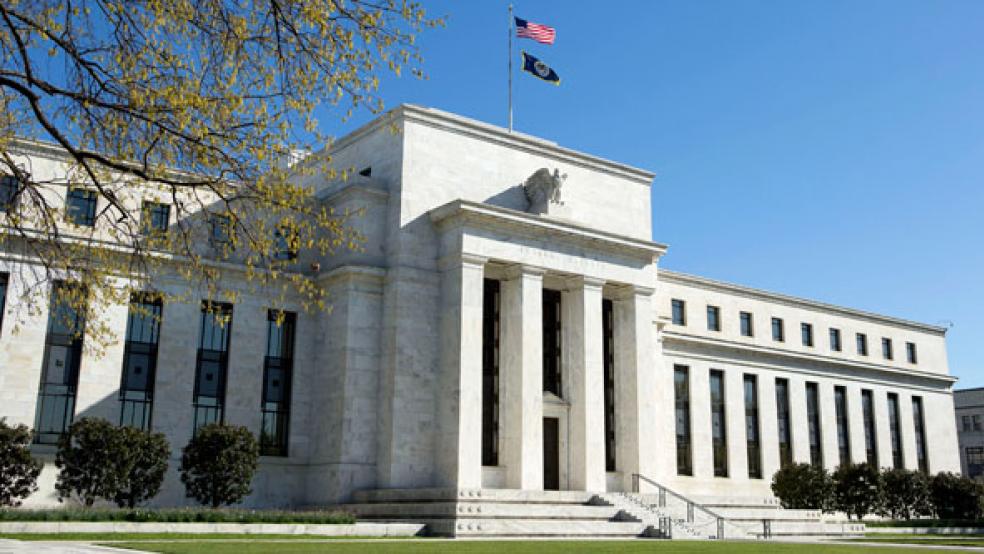When Fed Chairman Ben Bernanke goes before the Joint Economic Committee Thursday to discuss the economic outlook, he’ll probably tamp down growth expectations for the remainder of this year. It’s not just the stumbling stock market or last week’s mediocre jobs report driving concerns.
He’ll lament the headwinds from Europe and that lack of coordinated intervention on the continent. He’ll point to the slowing economies of China and India. He’ll talk about the failure of policymakers to clean up the foreclosure mess and stabilize underwater mortgages, which would help resuscitate the housing market.
But don’t expect the Fed to act.
He won’t reach into his monetary toolbox to protect the U.S. from those headwinds, even though he has plenty of options. There won’t be a third round of Fed purchases of government bonds and mortgage-backed securities, sometimes known as quantitative easing. Bernanke won’t signal an interest in seeing prices edge up at a little faster pace. And he certainly won’t signal the Fed is about to intervene in the European bond markets (yup, it could do that, too), which could help the beleaguered countries of the Eurozone’s southern tier stabilize their finances as well as help U.S. exporters.
It’s not just monetary hawks like Richard Fisher of the Dallas Fed who are opposed to more monetary easing, claiming it will spark inflation down the road. They opposed the first two rounds, but only have three votes on the 12 member Federal Open Market Committee, and Fisher doesn’t even sit on the panel this year.
JUST SAY NO TO QE3
Bernanke’s closest allies on the FOMC are also opposed to immediate action. Sandra Pianalto, president of the Cleveland Fed, said Monday that the jobs report didn’t warrant further easing of monetary policy. St. Louis Fed president James Bullard, an alternate on the committee, is still predicting three percent growth this year. He told a Tokyo conference hosted by the Bank of Japan earlier this week that “I do think our most potent weapon as a committee is to do further quantitative easing, but if we take such action, we'd be taking more risk with our balance sheet. I think right now we've got the right trade-off," he said.
Opponents of further quantitative easing are not just on the right and center, but on the left. James K. Galbraith, an economist at the University of Texas, noted that “quantitative easing adds money to bank balance sheets in return for other assets. This does not repair the value of homes, raise FICO scores (FICO is a publicly-traded company that tracks individuals’ credit ratings), create private income or increase loan demand,” he wrote in an email.
Paul Krugman and Lawrence Summers, two of the nation’s leading liberal economists, also said in recent speeches that the central problem facing the U.S. is lagging consumer demand caused by falling wages, the increased share of national income going to high-income individuals and corporate profits, and persistently high unemployment. From their perspective, it will require increased government spending (more stimulus) and progressive tax reform to restore long-term economic growth to more normal levels.
A FEW MAGIC BULLETS?
But several Fed watchers and former Fed officials contacted this week said there are some immediate steps the Fed could take to help the economy. “The Fed could lower the 10-year Treasury rate another 50 basis points and lower the 30-year mortgage rate another 100 basis points or possibly a touch more,” said Joseph Gagnon, a senior fellow at the Peterson Institute for International Economics. He recently served as associate director for the Fed’s monetary affairs division and helped execute the first round of quantitative easing. “If they could push 30-year mortgage rates below three percent, I think that would get a lot of attention and boost the housing market.”
Raising the inflation target is another potential source of stimulus. Higher inflation encourages people to spend more now rather than waiting. At his last press conference, Bernanke dismissed suggestions that the Fed could set its current two percent target slightly higher, saying it would jeopardize the central bank’s credibility as an inflation-fighter.
Yet James Hamilton, an economist at the University of California, San Diego and a former visiting scholar at the Fed, suggested the central bank could subtly push up the rate of inflation that people expect over the next decade. “If the Fed communicates clearly that any time inflation begins to fall below two percent it's going to buy up some more assets, I think it could help guide inflation expectations and possibly influence current economic conditions through that route,” he wrote in an email. “If nothing else, by preventing a self-fulfilling deflationary spiral the Fed can help keep the situation from deteriorating.”
BUYING FOREIGN BONDS
Another major option for the Fed, which is rarely discussed because of the political firestorm it would trigger, is buying foreign government bonds. In addition to the show of support for foreign governments that adopt concomitant fiscal policies that assure repayment, it would spur exports by pushing down the value of the dollar.
Though exports have been a major source of strength in the current rebound, exporters have been fighting their own headwinds. The dollar has been rising against most currencies as foreigners snap up low-yielding Treasury bonds. For all the sturm und drang over U.S. fiscal policy and its long-term imbalances, U.S. government bonds remain the world’s safest haven.
But the flip side of such a policy would be an increase in the Euro’s value, which would make it harder for European exporters, especially Germany, to compete in global markets. So even while the Germans and Dutch might appreciate the U.S. buying up Italian and Spanish bonds, they have little interest in seeing the Euro appreciate.
“The rest of the world is frantically buying U.S. bonds to push the dollar up,” Gagnon said. “They don’t want the favor returned.”





